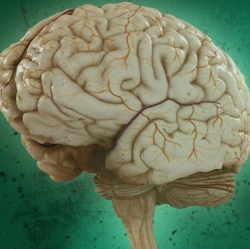
In a development that could lead to improved understanding of memory formation, scientists have discovered a new way information may be traveling throughout the brain. The team has identified slow-moving brainwaves they say could be carried only by the brain’s gentle electrical field.
"Researchers have thought that the brain’s endogenous electrical fields are too weak to propagate wave transmission," says Dominique Durand, professor of biomedical engineering at Case Western Reserve University. "But it appears the brain may be using the fields to communicate without synaptic transmissions, gap junctions or diffusion."
What led Durand and her team of researchers to this conclusion was the recording of neural spikes traveling too slowly to be carried by conventional means, indicating something else was at play. They claim that the only possible explanation for the passage of information in this way was the presence of a weak electrical field.
The team tested its theory both by way of computer modeling and observing activity in the hippocampus of a mouse brain, the central region associated with memory and spatial navigation.
While the electrical field was weak, with an amplitude of around 2.6 mV/mm, the team found that beginning with one cell or a group of cells, the field was able to stimulate neighboring neurons which in turn stimulated their neighboring neurons. This resulted in a spread of signals throughout the brain at a rate of around 10 cm per second.
By blocking the electrical field and also increasing the distance between the cells in the computer model, the team found they could slow down the speed of the wave. This furthered their belief that the mild electrical field is in fact behind the propagation of these type of brain signals.
"Others have been working on such phenomena for decades, but no one has ever made these connections," says Steven J. Schiff, director of the Center for Neural Engineering at Penn State University.
"The implications are that such directed fields can be used to modulate both pathological activities, such as seizures, and to interact with cognitive rhythms that help regulate a variety of processes in the brain."
The research team says that the newly unearthed mechanism could be behind the spread of neural signals such as sleep and theta waves (those associated with memory formation during sleep), along with epileptic seizure waves, all of which travel at around 1 m per second.
They are now exploring what part, if any, they play in epilepsy and regular brain function. If a role is established, they will seek to uncover what information the fields are carrying and where exactly they begin.
